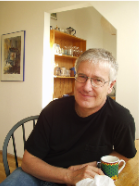Invited Speakers
We are pleased to announce the following invited talks:
Shape is a Non-Quantifiable Physical Dimension
Ingvar Johansson
Umeå University, Sweden
Open and Closed: Some Reflections from the Boundaries of Form
Frieder Nake
University of Bremen, Germany
Passing through Holes and Getting Entangled by Strings: An Automated Solution for a Spatial Puzzle
Paulo E. Santos
FEI, Sao Paulo, Brazil
Shape is a Non-Quantifiable Physical Dimension
Speaker

Abstract
In the natural-scientific community it is often simply taken for granted that, sooner or later, all basic physical property dimensions can be quantified; meaning that all their possible determinate properties can be put in a one-to-one correspondence with the real numbers. By using some transfinite mathematics, the paper proves this tacit assumption to be wrong. Shape is a very basic property dimension; but, since there are more possible kinds of determinate shapes than real numbers, shape cannot be quantified. In other words, there will never be a shape scale the way we have length, weight, and temperature scales. In fact, all shapes cannot even be represented in a three-dimensional manifold the way all perceivable colors are represented in various so-called color solids.
Open and Closed: Some Reflections from the Boundaries of Form
Speaker

Abstract
There is form and shape, there is structure and gestalt, there is order and chaos. Already by singling out exactly these words (and, therefore, concepts) from all other words, I am assuming a certain perspective. I am probably taking the perspective of an arrangement of things in space that I observe and, in my observation, I cannot but detect „shape“.
The view I want to take is a simple and naive one. It is the view of generating shape. I want to study just two qualities a shape may take on: its being closed or open. Concretely, I want to study two cases of algorithmic generation of something that you may call color-shape. (Because color can only appear by creating a shape, and shape can only appear by using color.) One case, well known, will be the program Aaron that Harold Cohen has worked on for forty years. The other case, not known, will be the program Generative Aesthetics I that Frieder Nake has worked on for one year. I will tell their stories, their aspirations, show their results, and discuss them.
The view I want to take is a simple and naive one. It is the view of generating shape. I want to study just two qualities a shape may take on: its being closed or open. Concretely, I want to study two cases of algorithmic generation of something that you may call color-shape. (Because color can only appear by creating a shape, and shape can only appear by using color.) One case, well known, will be the program Aaron that Harold Cohen has worked on for forty years. The other case, not known, will be the program Generative Aesthetics I that Frieder Nake has worked on for one year. I will tell their stories, their aspirations, show their results, and discuss them.
Passing through Holes and Getting Entangled by Strings: An Automated Solution for a Spatial Puzzle
Speaker
Paulo E. Santos
Associate Professor
IAAA - Artificial Intelligence in Automation group
FEI, Sao Paulo, Brazil
Associate Professor
IAAA - Artificial Intelligence in Automation group
FEI, Sao Paulo, Brazil

Abstract
In this talk I present the challenging problem of encoding the knowledge and reasoning processes involved in the common sense manipulation of physical objects. In particular we provide a formalisation of a domain involving rigid objects, holes and a string within a reasoning about actions and change framework. Therefore, this work investigates the formalisation and reasoning about flexible objects and void space (holes) in a single domain. Results of automated reasoning within this domain are also discussed.